#science and knowledge
Explore tagged Tumblr posts
Photo

This Drone Seeks Out Powerlines, Docks Itself To It To Recharge
Amazing development 👍👏🏻👏🏻
Follow us for more Tech Culture and Lifestyle Stuff.
#Charging Device#Induction Charging#Research Project#Science and Knowledge#University of Southern Denmark
3 notes
·
View notes
Text

2 notes
·
View notes
Text



Brazilian photographer Sebastião Salgado and his wife, Lélia Deluiz Wanick Salgado, have been instrumental in reforesting the Rio Doce Basin area in Brazil since 1998. Through their organization, Instituto Terra, they have planted over 2.7 million trees, successfully restoring more than 550 acres of forest and 2,000 natural springs. 
Their efforts have transformed a once barren landscape into a thriving forest ecosystem, demonstrating the profound impact that dedicated reforestation initiatives can have on environmental restoration.
22K notes
·
View notes
Text
Sexypink - A delightful read.
#sexypink/Tavares Strachan#sexypink/Bahamian Artist#sexypink/science and knowledge#tumblr/Tavares Strachan#pioneer#science and knowledge#honoring the unseen
1 note
·
View note
Text
youtube
Samsung galaxy z fold 6 - Wow, It's FINALLY Happening A lot of current flagship phones, such as those with the Z Fold 5, are equipped with two batteries that allow for faster charging that can reach 25W. It's not likely to be the case that Z Fold 6 will reach this level but it's worthwhile to mention that the present Galaxy S24 Ultra can reach 45 Watt charges, but only with Samsung's charging system.
#Samsung Galaxy Z Fold 6 review#Galaxy Z Fold 6#Z Fold 6#Samsung Galaxy Z Fold 6 unboxing#Samsung Galaxy Z Fold 6 release date#Galaxy Z Fold 6 price#Samsung Z Fold 6#Galaxy Z Fold 6 release date#galaxy fold 6#fold 6#galaxy z fold 5#samsung galaxy z fold 5#galaxy z fold 6 specs#z fold 6 samsung#samsung galaxy fold 6#samsung#z fold 5#galaxy z fold 6 features#galaxy fold 6 features#galaxy z fold 6 trailer#samsung z fold 5#science and knowledge#galaxy z fold 6 official#galaxy z fold 6 introduction#galaxy fold 6 trailer#z fold 6 rumors#fold6#samsung galaxy z fold 6 5g#samsung galaxy z fold 6 initial leaks#samsung galaxy z fold 6 features
0 notes
Text
The weirdly competent Doctor
So! The Watchtower's Medical Bay is a hub of constant Activity. With the number of Heroes who work under the Justice League, there are always injuries, health check-Ups, and illnesses that need healing.
But with the amount of Variant Biologies that those Heroes have, it's always a guessing game as to how to help them best. Some Metahumans react positively to penicillin, but others react like it's their Kryptonite. Some Aliens have anatomy similar to Humans, others are so different you can't tell the Stomach from the Bladder.
So when they hired a New Doctor for the Medical Bay, they had to run him through an entire Course on Variant Biologies and how best to treat specific Heroes. It was long and difficult to remember fully, but it was necessary for him to know.
But then the new Doctor started correcting Them.
"Actually, Martian's react better to the Syrup of Eucalyptus Plants better than Penicillin, since Eucalyptus is very similar to a medicinal plant from Mars which they used in many of their antibiotics."
"I don't think just pumping double doses of sedative is the best way to calm down a Speedster, that could have adverse effects on their body. Perhaps try Psychic Intervention? Their minds move a Mile a Second, but if you can calm them down their bodies will follow suit."
"Of course you use Micro-Doses of Kryptonite to operate on Superman! What else would you do?! I don't know, maybe ask JLD to enchant your Equipment to make use of Kryptonian suseptiblity to Magic? The Kryptonite is just gonna give him Cancer!"
Of course the Doctors didn't take kindly to being rudely corrected by a newbie, and Fired him on his first day.
Then a few days later their usual Treatments don't work, and they decide to give those strategies the Quack Doctor gave them out of desperation.
And Lo and Behold, they work! Martian Manhunter is fully healed and feels much better than the previous times he has needed surgery. Apparently they used a different Antibiotic that worked better with his Biology. Which was incredible, how had they figured it out?
Another Doctor you say? One who was experienced on Martian Biology and Medicinal History? He would very much like to meet with the man!
...
What do you mean you fired him for talking back?!
#Dpxdc#Dp x dc#Dcxdp#Dc x dp#Danny Phantom#Dc#Dcu#Danny is a Doctor#Danny is the best Doctor#He is more experienced with different biologies since he studied under Frostbite and worked in Amtiy for so long#He had literally operated on Martin's and Speedsters before#When Batman hears about this he's gonna lose it#They had a Doctor who had extensive knowledge on the biology if dead races and they FIRED HIM!?#For talking back!?#Sure he was a little rude about it but to be fair you guys were using Kryptonite on Superman to Operate#Did none of you consider his other Big Weakness? Magic?#Oh as men of science you don't value magic do you?#Well he does apparently so bring him back here Now!
8K notes
·
View notes
Text
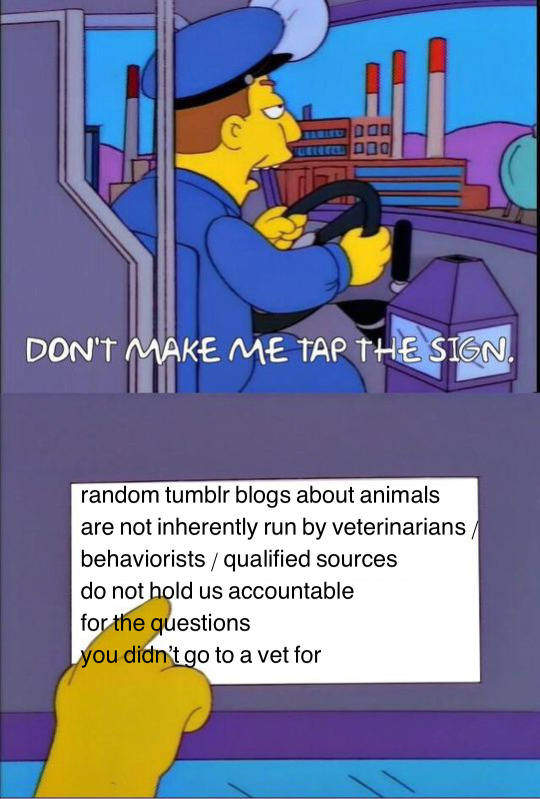
#i have a degree in environmental science and im very knowledgeable about birds however this does not mean i have an easy access encyclopedia#Of bird afflictions#In my brain
9K notes
·
View notes
Text
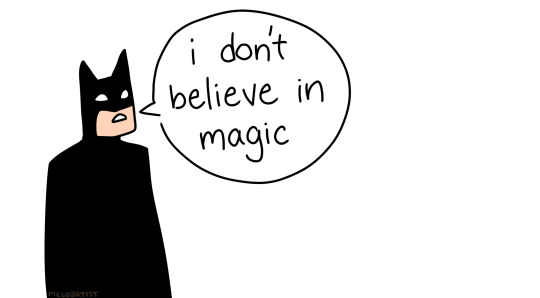
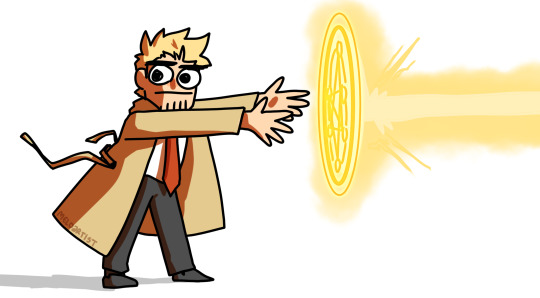
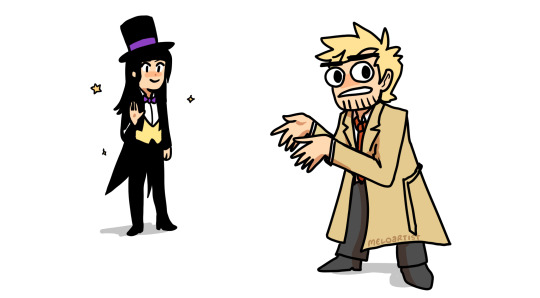
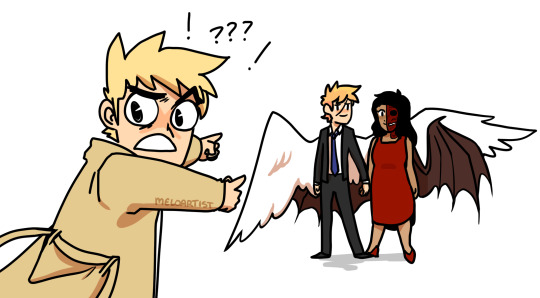
"i simply do not see it. i am looking away"
#batman#john constantine#zatanna zatara#lucifer morningstar#mazikeen#dc comics#hellblazer#if anyone is looking at this and going 'omg lucifer reference': please look at my blog please look at my blog pl#rbs > likesss!#was originally going to put the ot3 in this but i wanted a bit of a wider audience ig lmao#this was oriuginally done in ms paint and i think i put more emotion into those drawings than i have ever in my entire life before#mazikeen morningstar#mazifer#see you can make an argument that it's based to look god in the face and say you're an atheist#or that philosophically magic is just science that is beyond the scope of our knowledge#however#the way that it's always presented imo by batman...#anyway yet another 2 year old sketch i finally got around to lining#dc meme#1k
2K notes
·
View notes
Text

Restoring Indigenous aquaculture heals both ecosystems and communities in Hawai‘i
For generations, native Hawaiians have understood that their aquaculture systems, fishponds known as loko i‘a, serve as nurseries that seed fish populations in surrounding waters. For the first time, a team of scientists from the Hawaiʻi Institute of Marine Biology (HIMB) have modeled this feat of Indigenous science in a study.
“We are using science to translate ‘ike kupuna, or Indigenous knowledge, into policy,” said study co-author Kawika Winter, an ecologist at HIMB and He‘eia National Estuarine Research Reserve (NERR).
“The value of this paper is that it’s one of the first, if not the first, to really show that there are ways to do aquaculture in ways that benefit the system around it.”
In partnership with He‘eia NERR and Paepae o He‘eia, a nonprofit organization dedicated to stewarding the He‘eia loko i‘a, an ancient Hawaiian fishpond enclosing 36 hectares (88 acres) of brackish water, the team simulated different restoration scenarios in Kāne‘ohe Bay on O‘ahu Island based on a simplified food web. The study found that restoring more of the bay into fully functional loko iʻa would grow fish populations not just within the ponds, but across the bay.

“Aquaculture has a really bad reputation for basically destroying areas around it, but those are commercial approaches to aquaculture that aren’t holistic in their thinking or values-based like Indigenous management,” Winter said. “Rather than ensuring the health of the system, commercial aquaculture is concerned with maximizing profits.”

Winter attributed the success of the loko i’a design to Indigenous thought processes: “Indigenous thinking is operating within the opportunities and constraints of this system and figuring out a way to make things abundant within that context, sometimes even increasing abundance beyond natural levels.
Restoring ecosystems and relationships
Since co-founding Paepae o He‘eia in 2001, study co-author Hi‘ilei Kawelo, a sixth-generation Hawaiian from Kāne‘ohe Bay, has witnessed thousands of volunteers transform the He‘eia loko i‘a.
With the ongoing restoration, Paepae o He‘eia has seen both the aquatic environment and participants’ well-being improve with increased access to traditional foods, strengthening their relationship to place, and fortifying their family and community relationships. “For me and for a lot of our employees, this is one of our outlets, if not our primary outlet for exercising aloha ‘āina [love of the land],” Kawelo said.
“‘Āina is so important, because it is a term for a system that has the nature and its people in an inseparable reciprocal relationship,” Winter said. “The concept is core to this work because it’s about getting back into a way of thinking where there is no separation between the lands, the waters and us.”
While the overarching goal of Paepae o He‘eia and other fishponds is to revitalize Hawai‘i’s extensive Indigenous aquaculture system, Kotubetey said he knows the work may take generations.
#solarpunk#solar punk#indigenous knowledge#reculture#community#hawai'i#indigenous science#acquaculture#restoration#marine ecosystem
1K notes
·
View notes
Text
Legislation passed last year allows federally recognized tribes to practice cultural burning freely once they reach an agreement with the California Natural Resources Agency and local air quality officials.
Northern California’s Karuk Tribe, the second largest in California, becomes the first tribe to reach such an agreement.
(Feb. 27, 2025, Noah Haggerty)
Northern California’s Karuk Tribe has for more than a century faced significant restrictions on cultural burning — the setting of intentional fires for both ceremonial and practical purposes, such as reducing brush to limit the risk of wildfires.
That changed this week, thanks to legislation championed by the tribe and passed by the state last year that allows federally recognized tribes in California to burn freely once they reach agreements with the California Natural Resources Agency and local air quality officials.
The tribe announced Thursday that it was the first to reach such an agreement with the agency.
“Karuk has been a national thought leader on cultural fire,” said Geneva E.B. Thompson, Natural Resources’ deputy secretary for tribal affairs. “So, it makes sense that they would be a natural first partner in this space because they have a really clear mission and core commitment to get this work done.”
In the past, cultural burn practitioners first needed to get a burn permit from the California Department of Forestry and Fire Protection, a department within the Natural Resources Agency, and a smoke permit from the local air district.
The law passed in September 2024, SB 310, allows the state government to, respectfully, “get out of the way” of tribes practicing cultural burns, said Thompson.
For the Karuk Tribe, Cal Fire will no longer hold regulatory or oversight authority over the burns and will instead act as a partner and consultant. The previous arrangement, tribal leaders say, essentially amounted to one nation telling another nation what to do on its land — a violation of sovereignty. Now, collaboration can happen through a proper government-to-government relationship.
The Karuk Tribe estimates that, conservatively, its more than 120 villages would complete at least 7,000 burns each year before contact with European settlers. Some may have been as small as an individual pine tree or patch of tanoak trees. Other burns may have spanned dozens of acres.
“When it comes to that ability to get out there and do frequent burning to basically survive as an indigenous community,” said Bill Tripp, director for the Karuk Tribe Natural Resource Department, “one: you don’t have major wildfire threats because everything around you is burned regularly. Two: Most of the plants and animals that we depend on in the ecosystem are actually fire-dependent species.”
The Karuk Tribe’s ancestral territory extends along much of the Klamath River in what is now the Klamath National Forest, where its members have fished for salmon, hunted for deer and collected tanoak acorns for food for thousands of years. The tribe, whose language is distinct from that of all other California tribes, is currently the second largest in the state, having more than 3,600 members.
Trees of life
Early European explorers of California consistently described open, park-like woods dominated by oaks in areas where the forest transitions to a zone mainly of conifers such as pines, fir and cedar.

The park-like woodlands were no accident. For thousands of years, Indigenous people have tended these woods. Oaks are regarded as a “tree of life” because of their many uses. Their acorns provide a nutritious food for people and animals.
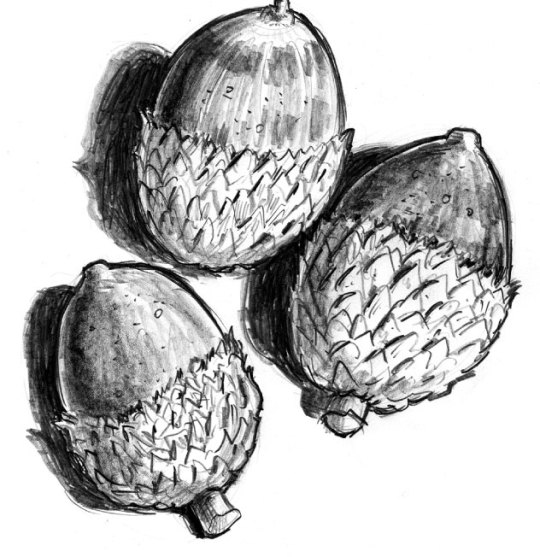
Indigenous people have used low-intensity fires to clear litter and underbrush and to nurture the oaks as productive orchards. Burning controls insects and promotes growth of culturally important plants and fungi among the oaks.

Debris, brush and small trees consumed by low-intensity fire.
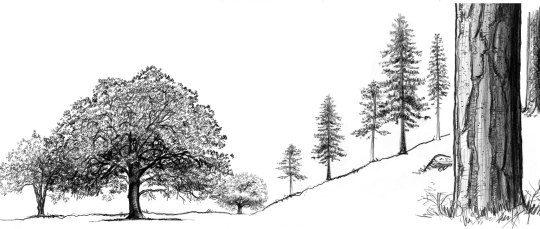
The history of the government’s suppression of cultural burning is long and violent. In 1850, California passed a law that inflicted any fines or punishments a court found “proper” on cultural burn practitioners.
In a 1918 letter to a forest supervisor, a district ranger in the Klamath National Forest — in the Karuk Tribe’s homeland — suggested that to stifle cultural burns, “the only sure way is to kill them off, every time you catch one sneaking around in the brush like a coyote, take a shot at him.”
For Thompson, the new law is a step toward righting those wrongs.
“I think SB 310 is part of that broader effort to correct those older laws that have caused harm, and really think through: How do we respect and support tribal sovereignty, respect and support traditional ecological knowledge, but also meet the climate and wildfire resiliency goals that we have as a state?” she said.
The devastating 2020 fire year triggered a flurry of fire-related laws that aimed to increase the use of intentional fire on the landscape, including — for the first time — cultural burns.
The laws granted cultural burns exemptions from the state’s environmental impact review process and created liability protections and funds for use in the rare event that an intentional burn grows out of control.
“The generous interpretation of it is recognizing cultural burn practitioner knowledge,” said Becca Lucas Thomas, an ethnic studies lecturer at Cal Poly and cultural burn practitioner with the yak titʸu titʸu yak tiłhini Northern Chumash Tribe of San Luis Obispo County and Region. “In trying to get more fire on the ground for wildfire prevention, it’s important that we make sure that we have practitioners who are actually able to practice.”
The new law, aimed at forming government-to-government relationships with Native tribes, can only allow federally recognized tribes to enter these new agreements. However, Thompson said it will not stop the agency from forming strong relationships with unrecognized tribes and respecting their sovereignty.
“Cal Fire has provided a lot of technical assistance and resources and support for those non-federally recognized tribes to implement these burns,” said Thompson, “and we are all in and fully committed to continuing that work in partnership with the non-federally-recognized tribes.”
Cal Fire has helped Lucas Thomas navigate the state’s imposed burn permit process to the point that she can now comfortably navigate the system on her own, and she said Cal Fire handles the tribe’s smoke permits. Last year, the tribe completed its first four cultural burns in over 150 years.
“Cal Fire, their unit here, has been truly invested in the relationship and has really dedicated their resources to supporting us,” said Lucas Thomas, ”with their stated intention of, ‘we want you guys to be able to burn whenever you want, and you just give us a call and let us know what’s going on.’”
#good news#environmentalism#traditional ecological knowledge#cultural burns#prescribed burns#california#fire#science#environment#nature#animals#usa#indigenous people#Karuk Tribe#indigenous conservation#conservation#indigenous peoples#indigenous history#colonialism#decolonisation#decolonization#long post#intentional burns#climate change#climate crisis
301 notes
·
View notes
Text
I think it’s neat that the Phineas and Ferb characters aren’t into summer because they dislike learning or math or anything like that. These kids actually LOVE math & science & the arts. They love summer because it gives them more free time to work on personal projects using those skills
#phineas and ferb#it could be so easy for the show to fall into#blah I hate science I hate nerd stuff#but it doesn’t and I love that#the show is about how knowledgeable and creativity are cool#actually
647 notes
·
View notes
Photo

Amazon Unveiled New Air Delivery Drone, Introduced New Medication Delivery Via Drone
Cool. But it won't be launched until 2024.
Follow us for more Tech Culture and Lifestyle Stuff.
6 notes
·
View notes
Text
Science is magic 🤔
#pay attention#educate yourselves#educate yourself#knowledge is power#reeducate yourself#reeducate yourselves#think about it#think for yourselves#think for yourself#do your homework#do some research#do your own research#ask yourself questions#question everything#science#experiment#try it#home experiments#you decide#magic
883 notes
·
View notes
Text


7K notes
·
View notes
Text
Everytime I hear someone say "love is what makes us human"I think of that one guy who was trying to describe humanity and said humans were featherless bipedals and another guy responded to that claim by bringing in a plucked chicken saying "BEHOLD A MAN"
Like I could hold up a million animal species and say "BEHOLD A HUMAN" because they feel love. Something that isn't just a human experience.
The point being that describing a group based solely off a few features or emotions makes the definition too broad to claim that it is what makes that species said species.
Saying humans are humans cause they have no fur would include furless animals. Same with saying love is what defines humanity. Like either you think elephants don't feel love or elephants are human. Your dog doesn't actually love you or your dog is human.
You can't use vague overly broad concepts to define humans as a species. So maybe stop trying to dehumanize people for not feeling the same emotion as you in the same way you do?
#text#aro#aromantic#ace#asexual#aroace#aplatonic#loveless#aspec#amatonormativity#allonormativity#i wont go into the science part of it because im definitely not knowledgeable for that#but from what i do know its that the lines between species are more blurred than ppl realize#so trying to define humanity by 1 overbroad concept will never work
3K notes
·
View notes